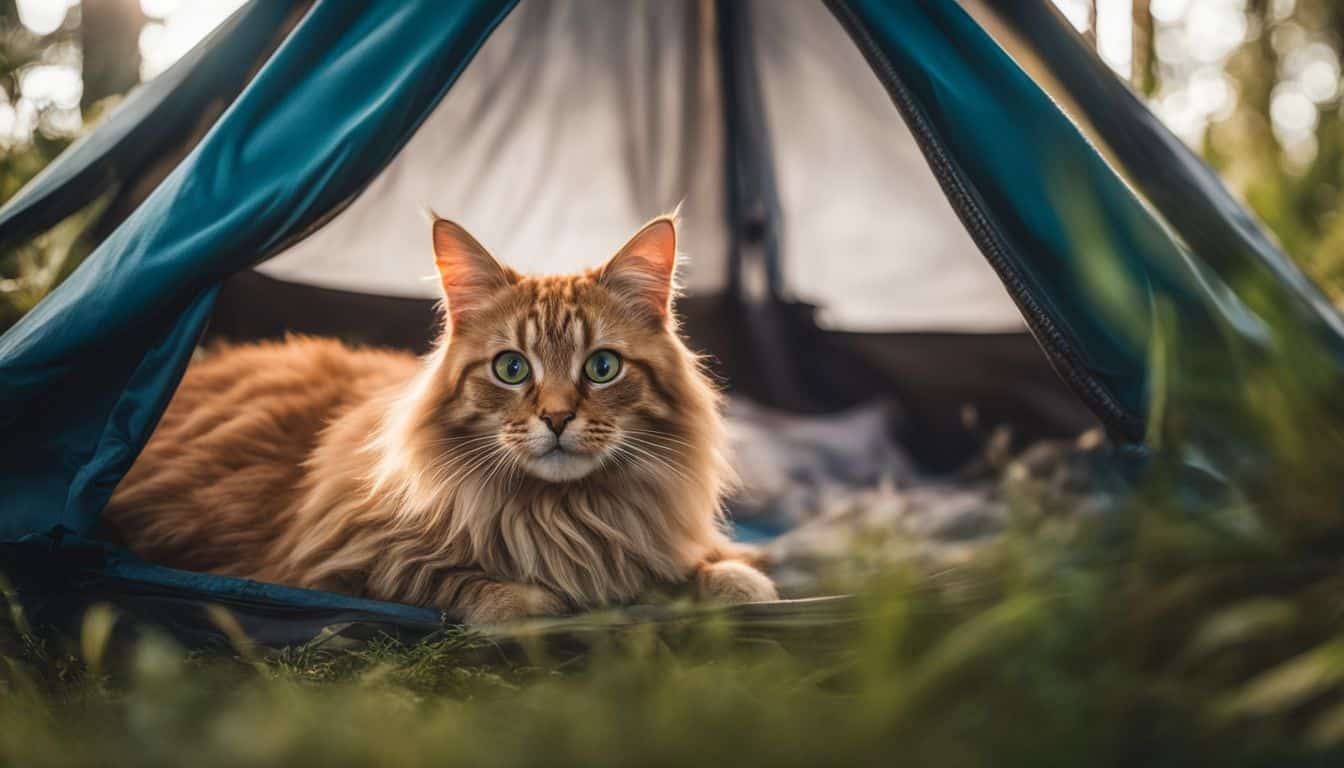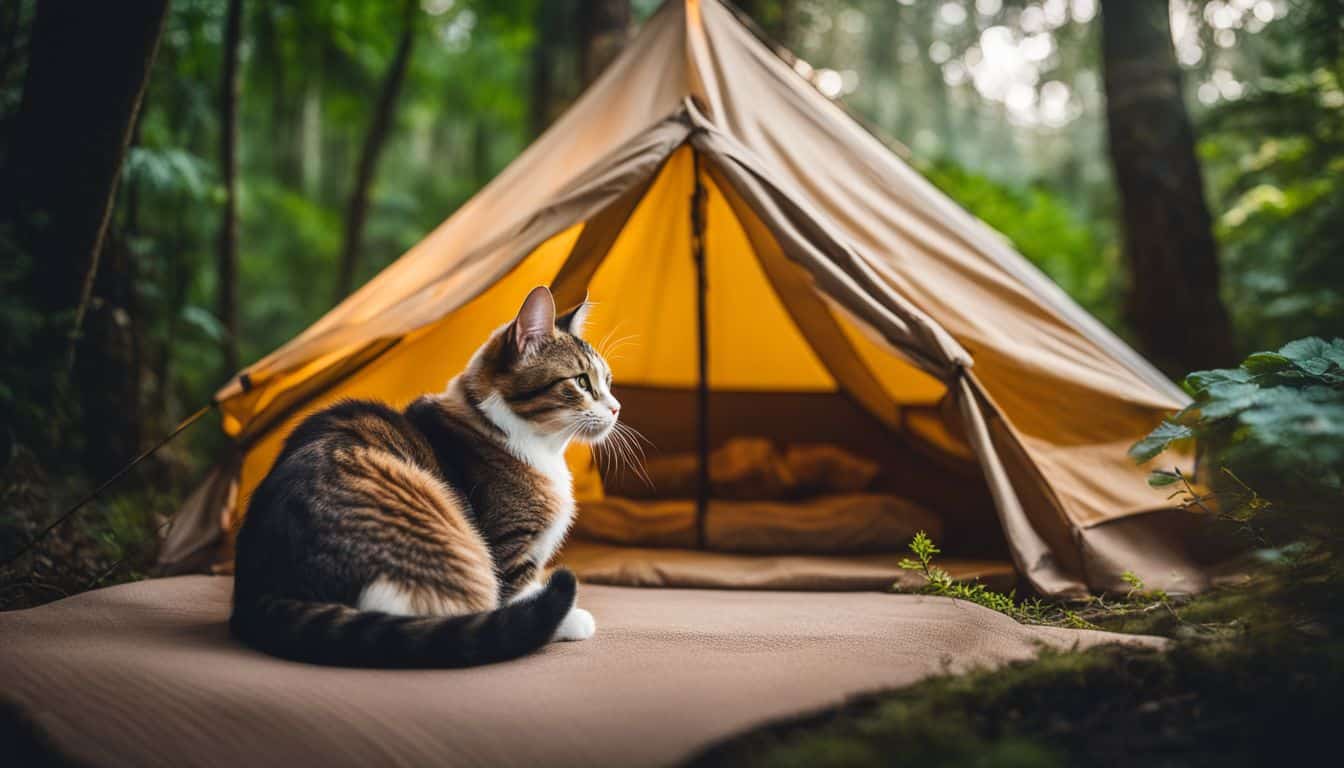As the trend of camping with cats continues to grow, more pet owners are discovering the joys of car camping with their feline friends. This guide will help you navigate the unique challenges and opportunities of car camping with cats, ensuring a safe and enjoyable experience for both you and your furry companion.
Why Cat Camping?
Car camping with cats offers a perfect blend of adventure and comfort. It allows you to explore the great outdoors while providing a familiar, secure base for your cat. Whether you’re camping with cats in an RV or using a travel trailer, the key to success lies in proper preparation and understanding your cat’s needs.
Preparing Your Cat for Car Camping
Before embarking on your adventure, it’s crucial to acclimate your cat to car travel. Start with short trips around the neighborhood, gradually increasing the duration. Harness and leash training is essential for camping with cats safely. Introduce your cat to camping gear at home, allowing them to explore tents and sleeping bags in a familiar environment.
Begin by placing the tent in your living room or backyard, allowing your cat to investigate at their own pace. Use positive reinforcement techniques, such as treats and praise, to create positive associations with the car and camping equipment. Practice short “mock camping” sessions at home to help your cat adjust to the new routines and environment they’ll experience during the actual trip.

Essential Gear for Cat Car Camping
Pack safety equipment like secure carriers, GPS trackers, and a cat-specific first aid kit. Don’t forget comfort items such as your cat’s favorite bed and toys. For the car, consider window screens to prevent escape and non-slip mats for stability. Include a collapsible water bowl and plenty of fresh water for the journey.
Bring a variety of your cat’s favorite treats to help manage stress and reward good behavior. Consider packing a familiar-smelling item, like a blanket from home, to provide comfort in the new environment. If your cat uses medication, ensure you have enough for the trip plus extra in case of unexpected delays.
Choosing the Right Campsite
Research pet-friendly campgrounds that offer a balance of seclusion and accessibility. Look for sites with natural barriers that can help contain your cat and provide a sense of security. Consider the terrain and wildlife in the area – avoid sites near busy roads or areas known for dangerous wildlife.
Check if the campground has specific rules for pets, such as leash requirements or restricted areas. If possible, choose a site near amenities like water sources and restrooms for convenience. Look for campsites with shade to keep your cat cool during hot days, and consider the proximity to hiking trails if you plan to explore with your cat.
Setting Up a Cat-Friendly Car Camp
Create a safe sleeping area in your vehicle with proper ventilation and temperature control. At the campsite, set up a secure outdoor area using portable enclosures. Carefully consider litter box placement to maintain hygiene and minimize odors. Arrange your campsite to provide multiple “safe spaces” for your cat, such as a covered crate or a designated area in the tent.
Set up a scratching post or pad to satisfy your cat’s natural instincts and protect your camping gear. Create vertical spaces, like a cat tree or elevated perch, to give your cat a sense of security and a vantage point to observe their surroundings. Ensure all food and treats are stored securely to avoid attracting wildlife to your campsite.
Daily Routines and Activities
Maintain your cat’s regular feeding schedule and ensure access to fresh water. Offer short, supervised exploration sessions and interactive play to keep your cat engaged and exercised. Set up a routine that mimics your cat’s home schedule as closely as possible to reduce stress. Use a harness and leash for outdoor exploration, allowing your cat to sniff and investigate their new surroundings safely.
Bring familiar toys and introduce new ones designed for outdoor use, like feather wands or crinkle balls. Consider setting up a bird-watching station near your campsite to provide mental stimulation. Always supervise your cat during outdoor time and be prepared to return them to the safety of the car or tent if they show signs of stress or if unexpected situations arise.
Handling Common Challenges
Be prepared for various weather conditions and have strategies to keep your cat comfortable in both hot and cold temperatures. Stay vigilant about wildlife encounters and take precautions to protect your cat. In hot weather, ensure shade and plenty of fresh water, and consider cooling mats or vests. For cold weather, bring extra blankets and consider a cat-safe heating pad.
Be aware of signs of heat stroke or hypothermia in cats. For wildlife encounters, keep your cat in a secure enclosure or the vehicle during dawn and dusk when many animals are most active. Familiarize yourself with local wildlife and any specific precautions recommended for the area. Have a plan for safely storing food and waste to avoid attracting animals to your campsite.

Leave No Trace with Cats
Practice responsible camping by properly disposing of waste and minimizing environmental impact. This includes carefully managing cat litter and food waste. Use biodegradable cat litter and dispose of it according to campground rules, or pack it out if necessary. Clean up any scattered litter around your campsite.
Stay on designated trails to avoid damaging vegetation when exploring with your cat. Respect wildlife by keeping your cat from chasing or disturbing local animals. Properly store all food, including cat food, to prevent attracting wildlife. Leave your campsite as clean or cleaner than you found it, ensuring no trace of your cat’s presence is left behind.
Emergency Preparedness
Research nearby veterinary services before your trip and have an evacuation plan that includes pet-friendly accommodations. Keep a list of emergency contact numbers, including your regular vet and the closest 24-hour veterinary clinic to your camping location. Prepare a pet emergency kit with first aid supplies, any medications your cat needs, and copies of important documents like vaccination records.
Familiarize yourself with basic pet first aid procedures. Have a plan for securing your cat quickly in case of sudden weather changes or the need for rapid evacuation. Consider getting your cat microchipped if they aren’t already, and ensure their collar has up-to-date contact information.
Building Positive Experiences
Start with short trips and gradually increase the duration as your cat becomes more comfortable with car camping. Celebrate small successes to reinforce positive associations with the experience. Begin with day trips or single overnight stays close to home before attempting longer adventures. Use plenty of positive reinforcement, offering treats and praise when your cat shows calm behavior in new situations.
Create a “camping kit” of special toys or treats that only come out during these trips to make them extra exciting. Take lots of photos to document your cat’s progress and adventures. Be patient and willing to adjust your plans based on your cat’s comfort level. Remember, the goal is to create enjoyable experiences that both you and your cat will look forward to repeating.
Conclusion
By following these guidelines and adapting to your cat’s individual needs, you can create memorable car camping adventures together. Remember, patience and flexibility are key as you embark on this exciting journey with your feline companion.

Leave a Reply